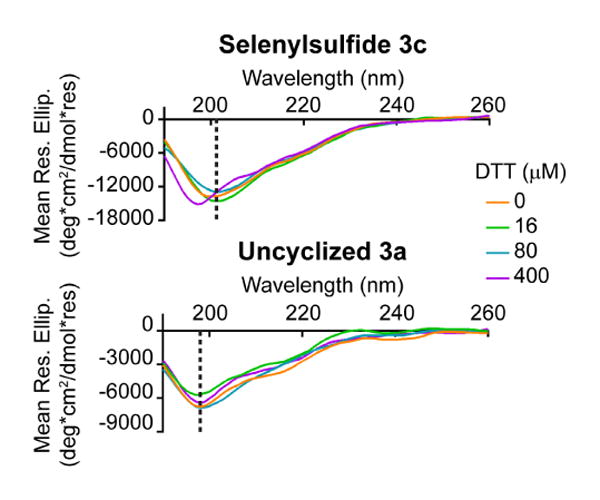Figure 3.

The selenylsulfide-bridged peptide is resistant to the reducing effects of DTT. By circular dichroism analysis, the selenylsulfide showed a notable shift in the minimum from 201 nm to 198 nm after the addition of 400 μM DTT (32 equivalents), demonstrating the stability of the peptide in the presence of a reducing agent. The dashed line indicates the minima at 0 μM DTT.
